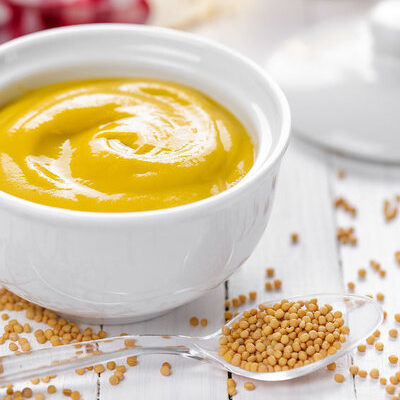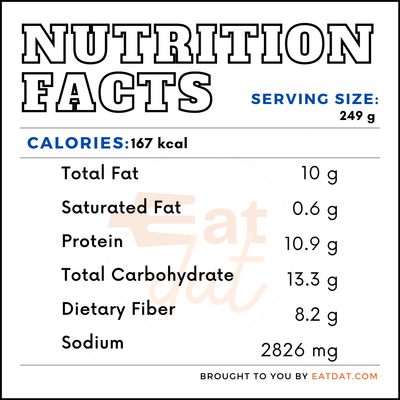
Mustard
What is Mustard?
Mustard is a condiment made from the seeds of the mustard plant. While the seeds are black in color with a yellow inside, the resultant condiment is yellow; however, other seeds can also be a light yellow color.
- This condiment is mildly spicy because of the presence of Allyl Isothiocyanate, which also has a pungent smell.
- Often used in sauces, sandwiches, and as a side, mustard as a condiment imparts a strong and unique taste to foods.
There are three varieties, which include white or yellow, brown, and black.
The most popular brands are:
- French’s
- Sir Kensington’s
- Gulden’s
- Grey Poupon
- Annie’s
- Garlic Festival
- Heinz
- Zatarain’s
- Bertman Original
- Kosciusko
Origin of mustard
This is a spice and has been used in certain cultures for more than 5,000 years. Texts from ancient India and Iraq (Sumer) have referred to this plant as a spice. References to this food have also been found in Egyptian texts dating back to 2,000 BC, as well as in Chinese texts around 1,000 BC. As a condiment, mustard has its origins in ancient Roman cuisine. However, the credit for the popularization of this food as a condiment in western cuisine goes to France, where monks have been preparing this condiment since the 10th century.
Nutrition
It is a rich source of fats, including omega-3 and omega-6 fatty acids. It also contains vitamins A, C, and K, as well as folate, niacin, and choline in large quantities. One cup of mustard (249 g) contains:

In addition, this plant also has good amounts of calcium, iron, magnesium, phosphorus, potassium, sodium, and selenium. Its leaves have beta-carotene, which has anti-carcinogenic properties.
Commercial production
This is an annual cash crop that is partial to cool climates, as it requires fertile, well-drained, and loamy soil to flourish. The seeds are sold to different industries either in the form of seeds or oil. Mustard flour and paste condiments are also popular. Canada is the highest producer of these seeds in the world, followed by Nepal, Myanmar, Ukraine, Russia, Czech Republic, China, and the US. A sauce made from a blend of rapeseed and mustard is produced in the Indian subcontinent.
To make this condiment, a mixture of brown and yellow seeds is used. The seeds are first cleaned and dried before being crushed and ground into a flour. This flour is then sieved to remove the bran and other particles. Water, and sometimes vinegar and wine, is added to the flour, and thoroughly blended into a paste, then flavoring is added and the mixture is blended again. This paste is then boiled and cooled to room temperature before bottling. Sometimes, the paste is aged to bring out stronger flavors.
Mustard recipes
This can be used in a variety of ways. It’s famous for its use as a condiment on sandwiches and hot dogs, although it can also be used in sauces and marinades. Seeds are even used as a garnish, while this plant’s oil gives a unique taste to dishes. Here are a few recipes:
- Mosterdsoep Recipe
- Cucumber Salad
- Fish Curry
- Sarson Wale Aloo
- Honey Mustard Chicken Wings
- Mustard Pork Schnitzel
- Roast Beef with Mustard Crust
- Spiced Mustard Seed Potatoes
FDA regulations
Mustard is classified as a spice by the FDA. This natural seasoning is deemed safe for its intended use. The black (brassica nigra), brown (brassica juncea), and white (brassica hirta) varieties are all included under this classification.
References
Mustard, Stat Communications Ltd, https://www.statpub.com/book/20monthyear-2013-farmer/sample.pdf
Frazie, Marissa D et al. “Health-Promoting Phytochemicals from 11 Mustard Cultivars at Baby Leaf and Mature Stages.” Molecules (Basel, Switzerland) vol. 22,10 1749. 17 Oct. 2017, doi:10.3390/molecules22101749, https://www.ncbi.nlm.nih.gov/pmc/articles/PMC6151555
